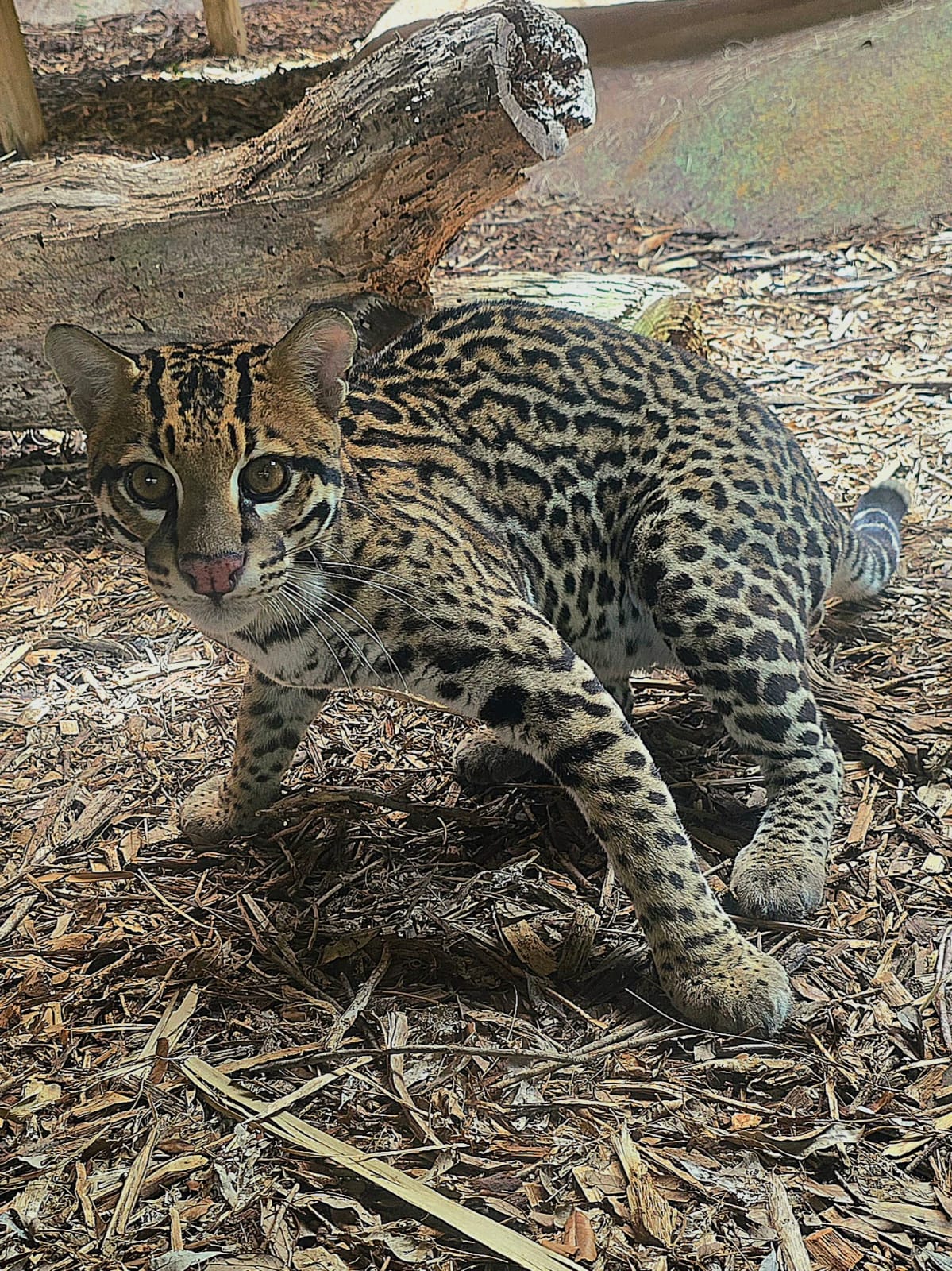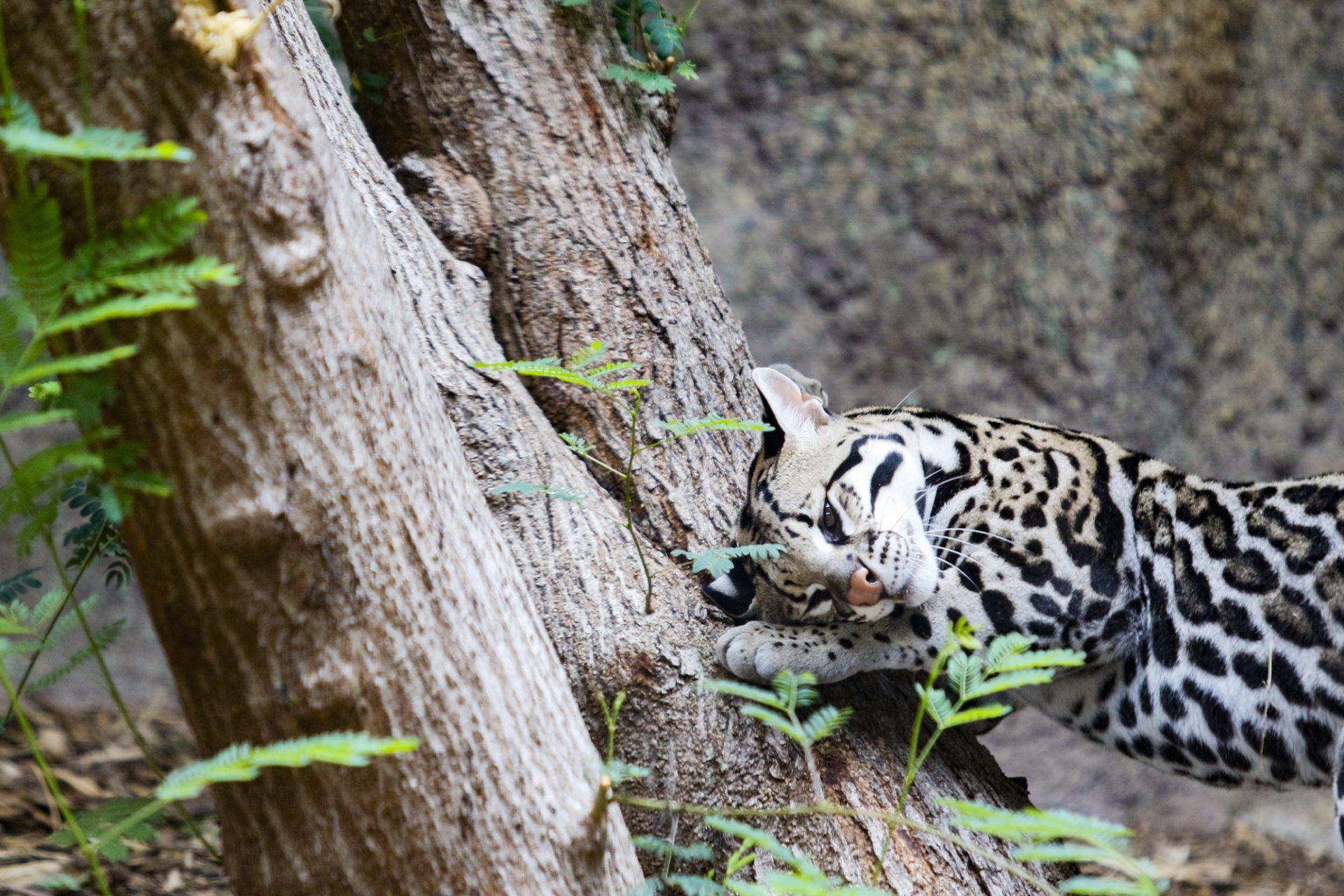|
Only have a minute? Listen instead
Getting your Trinity Audio player ready...
|

Gladys Porter Zoo is inviting the public to meet its newest resident: a male ocelot.
Affectionately called Iggy, GPZ said in a news release Wednesday that the 7-year-old ocelot arrived at the zoo in early August from Palm Beach Zoo in Florida.
After completing the mandatory quarantine period, zoo officials said Iggy is slowly being introduced to GPZ’s other ocelot resident Leeloo.

Leeloo made history as GPZ’s first ocelot following her arrival from Texas State Aquarium in 2022.
“We are all excited to be working with Iggy to help the Texas ocelot program succeed,” GPZ’s Mammal Curator Walter DuPree said in the release. “And Iggy has proven to be a special male who we enjoy.”
To ensure a safe and easy transition for both ocelots, the release stated zookeepers are gradually allowing the pair to get acquainted with one another by taking turns spending time in their shared outdoor habitat as well as familiarizing themselves with their scents behind the scenes.
“Where Leeloo is shy … Iggy is outgoing and curious. He interacts with his enrichment and responds to the keeper’s voices,” DuPree said. “He has also been spending a lot of time interested in Leeloo and she with him.”
The release noted that Leeloo made headlines last year following her participating in a groundbreaking artificial insemination procedure. While zoo staff were hopeful as well as excited about the procedure, the release said that it did not result in a pregnancy.
“While not every pairing produces a pregnancy, we are cautiously optimistic that the pairing of Leeloo and Iggy will produce offspring and continue the work Gladys Porter Zoo does in our efforts to contribute to species conservation,” DuPree said.
Currently listed as federally endangered in the United States, South Texas is the only place in the country where wild ocelots can be found, with GPZ adding there are thought to be fewer than 100 individuals left in the wild here.
The biggest threat to their survival is habitat loss and road mortality, the release stated.
Back in 2021, a 9-year-old ocelot that was killed by a vehicle near Laguna Atascosa National Wildlife Refuge was able to have his sperm salvaged for artificial insemination due to the quick action by wildlife biologists and experts at GPZ.
Friends of Laguna Atascosa National Wildlife Refuge and Defenders of Wildlife said earlier in the year that the unfortunate 2021 death of an ocelot in Hidalgo County indicated that the cats may have expanded their range.
The groups confirmed that an ocelot was hit and killed by a vehicle on Highway 281 in Hidalgo County about 50 miles from the known population in Texas at the Laguna Atascosa National Wildlife Refuge in Cameron County.
Samples from that ocelot were tested and in January, which revealed that the deceased ocelot is related to the wild ocelots in Cameron County.
“It makes you wonder, how many more ocelots are hidden out there? This is the first time there’s been confirmed evidence of an ocelot outside its range,” Dr. Tom deMaar, a wildlife veterinarian in the Rio Grande Valley and a member of the board of directors for Friends of Laguna Atascosa National Wildlife Refuge, said at the time.



